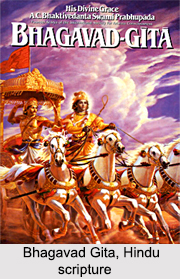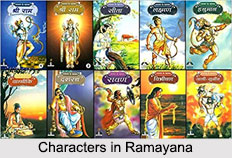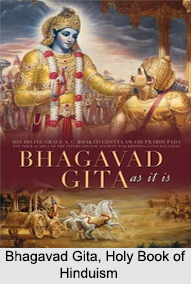 Teachings of Bhagavad Gita present different views regarding the ultimate reality and the destiny of a man. There were the Upanishad traditions based on the intuition of the soul, the Sarhkhya doctrine that state liberation can be obtained by freeing oneself from contact with nature. The Karma Mimarhsa view that by fulfilling the duties one can attain perfection, the way of devotional feeling which holds that by attaining exaltation of the heart, the gladness of freedom can be obtained. The supreme spirit is viewed either as an impersonal absolute or a personal lord. Further, the teachings of Bhagavad Gita attempt to synthesise the heterogeneous elements and merge them all into a single whole. Because of this reason, it also apparently provides conflicting views about the end of freedom and the means of discipline. Finding that the Gita is not a consistent piece of doctrine, different writers have tried to account for it in different ways. The two significant doctrines namely the theistic and the pantheistic are mixed up with each other, and follow each other, sometimes quite unconnected and sometimes loosely connected.
Teachings of Bhagavad Gita present different views regarding the ultimate reality and the destiny of a man. There were the Upanishad traditions based on the intuition of the soul, the Sarhkhya doctrine that state liberation can be obtained by freeing oneself from contact with nature. The Karma Mimarhsa view that by fulfilling the duties one can attain perfection, the way of devotional feeling which holds that by attaining exaltation of the heart, the gladness of freedom can be obtained. The supreme spirit is viewed either as an impersonal absolute or a personal lord. Further, the teachings of Bhagavad Gita attempt to synthesise the heterogeneous elements and merge them all into a single whole. Because of this reason, it also apparently provides conflicting views about the end of freedom and the means of discipline. Finding that the Gita is not a consistent piece of doctrine, different writers have tried to account for it in different ways. The two significant doctrines namely the theistic and the pantheistic are mixed up with each other, and follow each other, sometimes quite unconnected and sometimes loosely connected.
Teaching of Bhagavad Gita is considered as an application of the Upanishad ideal to the new situations which arose at the time of the Mahabharata. In adapting the idealism of the Upanishads to a theistically minded people, it attempts to derive a religion from the Upanishad philosophy. Teachings of Bhagavad Gita further show that the reflective spiritual idealism of the Upanishads has room for the living warm religion of personal devotion. The absolute of the Upanishads is revealed as the fulfilment of the reflective and the emotional demands of human nature.
The teachings of Bhagavad Gita attempt a spiritual amalgamation which could support life and conduct on the basis of the Upanishad truth. Teaching of Bhagavad Gita is said to have delivered points out regarding its central purpose to solve the problem of life and stimulate right conduct. It is obviously an ethical treatise, a yoga shastra. Bhagavad Gita was formulated in a period of ethical religion. So, the yoga shastra of Bhagavad Gita is rooted in Brahmavidya, or knowledge of the spirit. Teachings of Bhagavad Gita is said to have provided system of speculation as well as a rule of life, an intellectual search for truth as well as an attempt to make the truth dynamic in the soul of man.



















